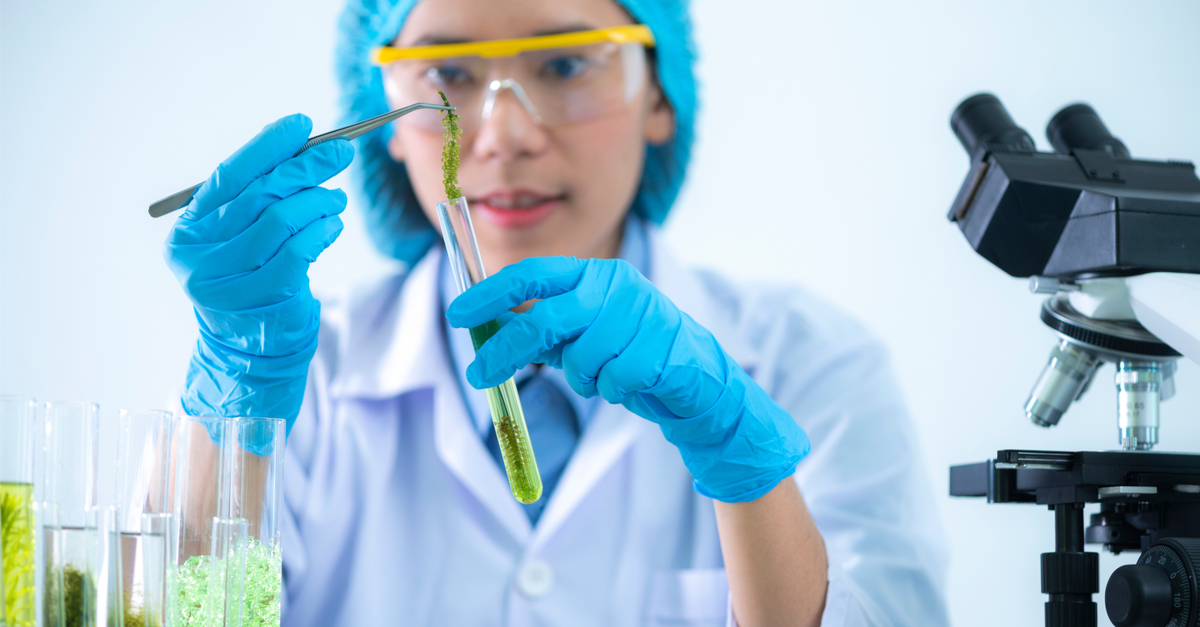What about the Microbiology?
Now, if it's been a few years since your high school biology course, we won't blind you with too many complex terms in this section, but the climate impact is not only affecting that which we can only see with our eyes. It's affecting the tiny microscopic organisms in our lakes, rivers and oceans, due to the reaction to light and dark. This section introduces you for some microbial food for thought on that part of the scientific team.

Polar oceans are distinct from other oceanic environments in a number of ways, but the presence of sea ice is a major habitat difference. Sea ice affects polar microbial communities by limiting light penetration into the upper ocean and by providing a unique sea-surface habitat. Sea ice serves as a support matrix for a diverse and dynamic assemblage of microbes, including phytoplankton and prokaryotes, often referred to as the sea-ice microbial community, or SIMCO. This includes bacteria, archaea, viruses, fungi, prions, protozoa and algae, collectively known as 'microbes'. These microbes play key roles in nutrient cycling, biodegradation/biodeterioration, climate change, food spoilage, the cause and control of disease, and biotechnology.
Growth of ice-associated microalgae can lead to extreme carbon enrichment in the ice, fuelling microbial production and providing a food supply for herbivorous metazoa. The absence of brine during the formation of sea ice, coupled with summer melting, contributes to significant and persistent water-column stratification. This is especially the case in the Arctic Ocean where permanent ice cover constrains wind mixing and the land-locked geography of the basin restricts exchange with lower-latitude waters. Other characteristics of polar oceans, such as low temperature and intense seasonal variation in primary production and carbon flux, are often more extreme than in other oceanic habitats.
Unique differences between the two polar oceans are due to the circumstance that the Arctic Ocean is a land-locked basin receiving 10% of the global run-off of freshwater while the Southern Ocean surrounds an ice covered land mass and is separated from lower-latitude waters by a well-defined circumpolar front.
The rivers emptying into the Arctic Ocean drain lower latitude terrestrial environments, including tundra and boreal forests. These rivers are quantitatively important sources of organic carbon to the Arctic.
Sea-ice microbial communities have been the focus of polar investigations for many years, with some of the early characterizations going back to the work of John Bunt, Rita Horner and Max Dunbar in the 1960s.
SIMCO are rich communities of prokaryotic and eukaryotic organisms found in sea ice at both poles.
Brine channels that form as salts are excluded during the freezing process provide a major SIMCO habitat within the ice. Sea-ice brines are reservoirs of dissolved organic and inorganic nutrients, and are home to abundant bacterial populations. The diversity and ecology of SIMCO bacteria have been the subjects of numerous studies over the years, with recent efforts focusing on describing the phylogenetic composition of bacterial assemblages.
Polynyas
Limited areas of persistently open water provide habitats that contrast with areas that are ice covered during much of the year. These open-water areas, called polynyas, result from a variety of physical processes. There have been several studies focusing on polynyas in recent years, notably the Canadian-led North Water (NOW) Polynya study. The NOW polynya was occupied for over four months in 1998, from April through July, and was also sampled in the late summer and early fall of 1997 and 1999. These studies show that microbes in the polynya were more active than their counterparts under the adjacent ice cover.
There is little overlap between the phytoplankton species found in adjacent sea ice and open waters and the distinct phytoplankton communities associated with different water masses that meet in the NOW. Work in the NOW in 2005, using clone library analysis, showed that the bacterial and archaea communities found in open waters are more similar to other open oceans than to the specialized sea-ice communities.
Sea-Ice Bacteria
Sea-ice brines are reservoirs of dissolved organic and inorganic nutrients, and are home to abundant bacterial populations. The diversity and ecology of SIMCO bacteria have been the subjects of numerous studies over the years, with recent efforts focusing on describing the phylogenetic composition of bacterial assemblages.
However, not all of the fun research work can always be conducted in the summer months. What about the health of our Arctic microbes in the dark months of our winter? View this video to see how researchers are examining that scientific question.
Now that you know the steps and process of conducting research, here is an example of an academic published report in 2014, from a light effects research project conducted on the microbes in Ward Lake on Ellesmere Island, Nunavut in 2009. It's a well drafted scientific report that walks through the steps of scientific inquiry, graphing of the data findings and conclusions, with a suggestion that the warming of the Arctic may induce a shift in protist biology communities and modify the pathway of carbon flow.
Click here to view the report.

Copyright © All Rights Reserved

